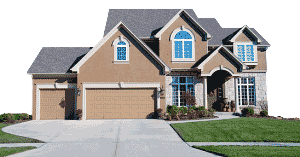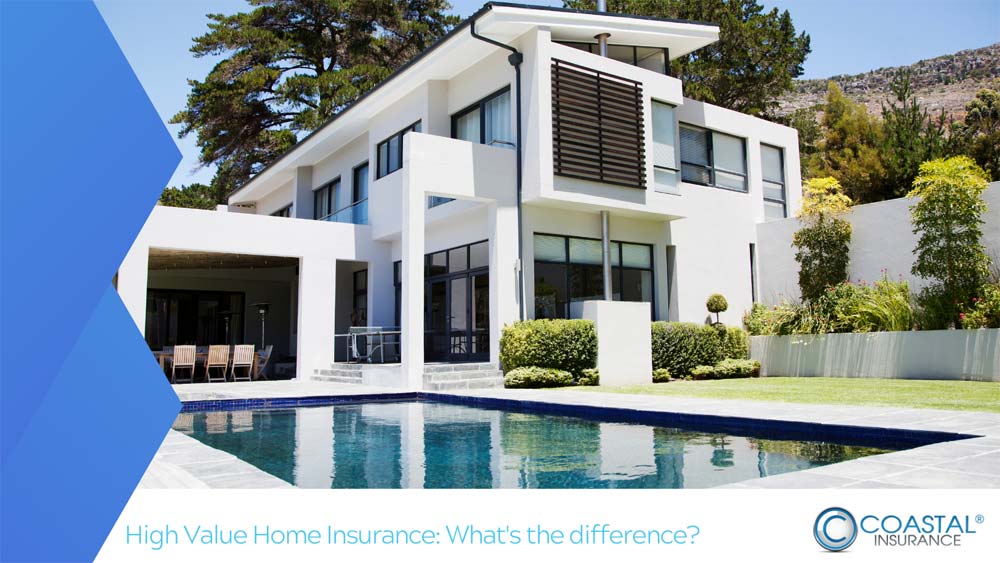New York Homeowners Insurance Rates
Get Top 10 Home Insurance Quotes Online





















NY Home Insurance as Easy as 1-2-3
AS SEEN ON:

AS SEEN ON:

New York Homeowners Insurance
Get the Best Rate Quotes in Minutes
- Compare Prices & Start Saving Today
- Rated A+ by AM Best
- Built to Save YOU Money!
- Get Competitive Quotes
Learn More About Home Insurance in New York
Common Homeowners Insurance Discounts
What is Insured
Home Insurance Basics
Types of Homeowners Insurance Policies
Other Homeowners Insurance Coverages
Common Homeowners Insurance Discounts
- New Homes may enjoy discounts of up to 14%.
- Security Systems such as deadbolt locks, simple alarm systems, and smoke detectors may reap discounts from 1-5%. Sophisticated monitoring services and integrated sprinkler systems may reduce your premiums as much as 20%.
- Combined Policies: If you combine your automobile and homeowner policy with the same carrier you may obtain discounts from 5% to 15%.
- Carrier Longevity: If you maintain your coverage with the same carrier for a number of years they will usually reward you with a discount.
- Retired Homeowner: On average stays home longer and may be rewarded with a 5% discount.
- Non-smoker: Some carriers reward non-smokers a 5% discount.
What is Insured

Home Insurance Basics
Coverage A – Dwelling
Primary Structure-Commonly referred to as “Dwelling Coverage”—This is simply your home or house and permanent attachments.
Coverage B – Structure
Provides protection for unattached structures such as tool sheds, detached garages, houses, and their contents. Coverage B is usually equal to 10 percent of the policy limit on Coverage A.
Coverage C – Personal Property
Provides protection for personal belongings. Items such as clothing, furniture, and standard electronics are covered. Some policies may include credit card theft and away from home theft. The policy limit on Coverage C is equal to 50 percent of the policy limit on Coverage A. Most standard home insurance policies cover the contents of your home on an actual cash value basis. Many insurers offer an option to insure your belongings at replacement cost. The premium will be higher for this coverage but may be worthwhile. Some forms of personal property, such as silverware, computers, guns, money, expensive antiques, and jewelry, have limited coverage under the homeowner’s policy and may be added to the policy as an endorsement.
Coverage D – Additional Living Expenses
If your home is damaged to the extent of being uninhabitable, this coverage will pay for the living expenses away from the home while repairs are being made. These expenses could include limited motel, restaurant, and warehouse storage. The policy limit to Coverage D is equal to 20 percent of the policy limit on Coverage A.
Coverage E – Personal Liability
This coverage protects you against a claim or lawsuit resulting from bodily injury or property damage to others caused by your negligence. For example, your dog bites someone, your child breaks a window or a friend or stranger hits his or her head on something. This coverage applies to you and all family members who live with you. The amount of coverage is determined by the policy owner at the time the policy is issued.
Coverage F – Medical Payments
Regardless of who is at fault, this coverage pays for the medical expenses for persons accidentally injured on your property.
Types of Homeowners Insurance Policies
There are two types of policies: All Risks and Named Perils.
A Named Perils policy covers losses that are due to only those perils listed in the policy. The perils typically covered include fire, windstorm, hail, and other direct physical losses. An All Risks policy covers losses that are due to any peril except those specifically excluded in the policy. It is important to note the all risks policy provides broader protection than do Named Perils policies.
The five types of homeowner packages offered to owners of single-family owner-occupied homes are HO-1, HO-2, HO-3, HO-3 with HO15 and HO-8.
- HO-1 Basic Homeowner Insures your property against the following 11 basic Named Perils: fire/lightning, loss of property removed from premises endangered by fire or other perils, windstorm/hail, explosions, riot/civil unrest, aircraft, vehicles, smoke, vandalism/malicious mischief, theft, and breakage of glass constituting a part of the building.
- HO-2 Broad Basic Homeowner Insures your property against the 11 basic Named Perils in HO-1 plus 7 additional named perils: falling objects, the collapse of the roof due to the weight of ice or snow or sleet, collapse of the building(s) or any part thereof, bursting of steam/hot water system, leaking of plumbing or heating system, freezing of pipes, sudden and accidental damage from artificially generated currents to electrical appliances or devices or fixtures or wiring.
- HO-3 Special Extended Homeowner Provides for comprehensive coverage (All Risks) on your home and the 18 (HO-2) broad named perils coverage on your contents. This is the most popular of all homeowner policies.
- HO-3 with HO-15 Comprehensive Homeowner (All Risks) Covers your home and personal property for everything that is not specifically excluded. This policy usually provides the broadest of all risks coverage available but is not offered by all insurance companies.
- HO-8 Modified Homeowner Covers homes that have suffered extensive depreciation. Historical or architectural features may make the home more expensive than its market cost. This coverage is more restrictive much like HO-1 but is geared towards older homes.
Other Homeowners Insurance Coverages
HO-6 Condominium Unit Homeowner Covers items not insured by the condominium association’s policy, such as property damage to personal belongings, wall, floor and ceiling coverings, and any accessories not originally installed in the unit. An HO-6 policy is basically an HO-2 policy. It also provides additional coverage for personal property, loss of use, personal liability, and medical payments.
HO-4 Renter’s Coverage Insures your household contents and personal belongings against the named perils in HO-2 policy. It also provides coverage for additional living expenses and includes personal liability protection.
Optional Homeowners Insurance Coverages
You can purchase optional coverage to add to your policy. They are called endorsements or sometimes “floaters”. Some common endorsements include:
- Inflation Guard Endorsement Allows your insurance company to automatically change your policy limit. This is done to cover the replacement cost of your home that is increasing with inflation to maintain your coverage at 80% of the replacement cost. Not all companies offer this endorsement.
- Guaranteed Dwelling Endorsement Covers the market value of your home. Often the market value is higher than the replacement cost.
- Guaranteed Contents Endorsement Covers the cost to replace a personal item even though you might have owned it for a number of years and it has depreciated in value.
- Other Structures Endorsement Covers larger more elaborate structures (gazebos, guest house, etc.) that would exceed the standard 10% limit.
- Sewer and Drains Endorsement Covers damage to your finished or storage basement in the event of faulty sewer lines or drains. This is not covered by standard policies.
- Scheduled Personal Endorsement Sometimes called a “personal article floater” covers possessions such as jewelry, furs, stamps, coins, guns, computers, antiques, and other items that may exceed normal limits in a standard policy. Each item is valued, itemized, and described. Excluded perils are listed. There is usually no deductible applied to this coverage.
- Blanket Endorsement Is used in place of a scheduled personal endorsement. There is no itemizing but the Blanket Endorsement covers what the standard policy does not cover such as jewelry, coins, etc..
- Increased Limits on Money and Securities Increases the coverage of money, banknotes, securities, deeds, etc..
- Secondary Residence Premises Endorsement Applies to a secondary residence.
- Home Daycare Endorsement Covers any liability claims if you operate a daycare in your home.
- Business Pursuits Endorsement Extends liability coverage if you operate an at-home sales business or other small “franchised” ventures such as Tupperware and Avon. It does not extend coverage if you own the business.
- Home Business Endorsement Extends liability coverage in your home if you own and operate a business in your home. It must be a small business.
- Personal Injury Endorsement Extends liability coverage to you if you are sued for Libel, Slander, and Defamation of Character. This is covered in umbrella policies and may not be needed.
- Income Property Endorsement Extends liability coverage to areas of your home or premise that you rent.
- Ordinance and Law Endorsement Extends coverage for additional costs of reconstructing your home under current codes. This usually applies to older homes.
- Watercraft Endorsement Extends personal liability and medical payments on small sailboats and outboard motorboats.
- Theft Coverage Protection Endorsement Extends theft protection to the contents of your motor vehicle, trailer, or watercraft without proof of forced entry.
- Credit Card Forgery and Depositors Forgery Coverage Endorsement covers Covers the loss, theft, or unauthorized use of credit cards. It also covers forgery of any check, draft, promissory note, etc.. This endorsement has certain exceptions. No Deductible applies.
- Flood Insurance Should be required by your lender if your home is located in a floodplain. Depending on where you live you may qualify for flood insurance through the National Flood Insurance Program (NFIP). Flood insurance covers direct physical damage to the main home and its foundation and erosion damage. It does not cover structures extended over water and structures other than buildings such as pools and gazebos.
- Earthquake Insurance Endorsement Is available through most insurance companies. It is regarded as catastrophic coverage and usually has a deductible of 10% of the home’s value.
- Windstorm Coverage Covers windstorm and hail damage if it is excluded from your standard policy. It usually depends on where you live.
Homeowners Insurance & Hurricanes in New York
A standard homeowners insurance policy provides coverage for wind and hail damage, which are both risks associated with hurricanes. However, some policies use a separate deductible for claims due to hurricanes or named storms.
The structure of this deductible can vary, depending on the insurer. Many policies use percentage-based deductible. For example, a home with an insured value of $500,000 and a 2% hurricane deductible—otherwise known as a catastrophic windstorm deductible would have a $10,000 deductible. The deductible is the part of the claim you are responsible for, so be sure to review your deductible with your agent.
Depending on your insurance company and the way your policy reads, catastrophic windstorm deductibles have a “trigger” built into the language of the policy. Many policies trigger with a Category 1 hurricane, while other policies have a Category 2 hurricane trigger—and some policies require certain millibar or storm surges requirements to be met for a hurricane deductible to be triggered. Be sure to review your policy language and deductible triggers with your agent.
Floods and storm surges are also common with hurricanes or powerful storms. The Insurance Information Institute estimates nearly 77,000 homes in New York are at risk from storm surge even with a less powerful Category 1 hurricane. Category 2 and 3 storms put hundreds of thousands more NY homes at risk for surge flooding.
Every home insurance policy has exclusions, which are risks the policy doesn’t cover. A standard homeowners insurance policy excludes coverage for floods, largely because flood claims can be difficult to predict. Fortunately, you have options. Many NY homeowners choose to add flood coverage with a National Flood Insurance Program (NFIP) policy. A growing number of private market insurers also offer coverage as well, helping to keep costs more affordable.
Flood insurance in New York state
Flood insurance is available as a standalone policy or as part of a complete homeowners insurance package. However, a homeowners insurance policy by itself can’t address potential flood risks. Rising water that enters your home or storm surge damage aren’t covered by a standard homeowners insurance policy.
For years, FEMA’s National Flood Insurance Program was the solution for most NY homeowners who needed flood coverage. Recently, however, several private market insurers began to offer competing policies, providing more options to homeowners in at-risk areas.
An NFIP policy provides coverage for both your home and your belongings with coverage as follows:
● Up to $250,000 structural coverage
● Up to $100,000 personal property coverage
Some private market policies parallel the coverage provided by an NFIP policy, while others offer higher coverage limits, a must-have for more expensive homes. In some cases, you can also use a private market policy paired with a base policy to raise your coverage limits and reduce your financial risk.
A Category 1 storm creates a risk of over $30 billion in damage to homes within the Empire State according to the Insurance Information Institute. However, rain happens everywhere and FEMA also reports that more than 20% of claims come from areas not designated as high risk. Flood insurance can be a wise investment even if your home isn’t on New York’s coastline.
- Call Coastal Insurance at 631-782-3175 and get your New York homeowners insurance quote today.
- We have customized thousands of policy features to meet the needs of New York homeowners
- Whether you’re raising a family upstate in Buffalo or in the Hamptons, Coastal Insurance has a home-owners insurance policy that fits your budget and lifestyle.
Compare Quotes for High Value Home Insurance in NY.
Shopping for the best home insurance premiums? Buying a new home, a secondary home or an investment property and need affordable homeowners or flood insurance? We make finding competitive insurance rates a snap! Let our companies earn your business. Fill out our no-obligation, hassle-free form.








